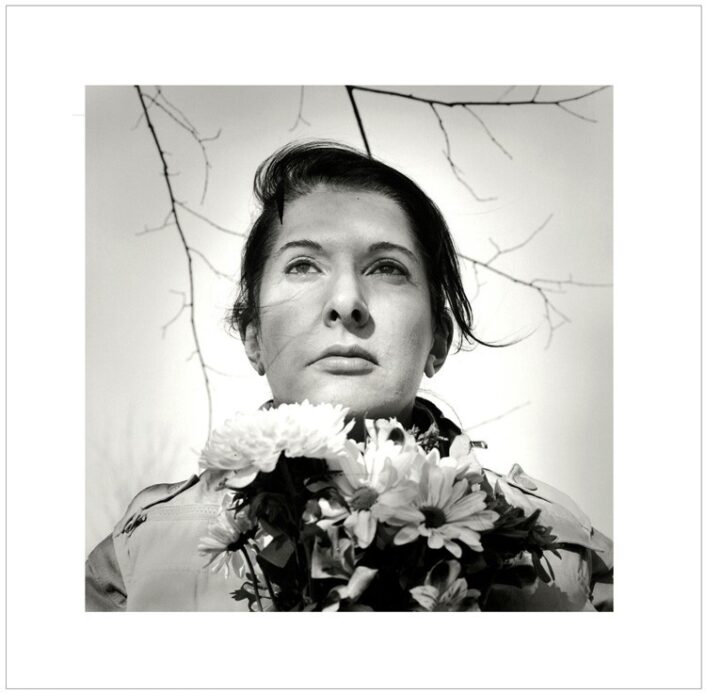Fine Art
The story behind “Migrant Mother”

“Migrant Mother”, 1936.
Image courtesy of: JStor Daily
As the Great Depression began to take hold of America, a young photographer took a photograph that became the image of the Great Depression. Dorothea Lange was a photographer who stepped aside from her studio and portrait work and took a job as a photographer for the Resettlement Administration. This program was a New Deal agency tasked with helping poor families relocation.
Lange spent the month of March 1936 in a field in central California. On this specific day, Lange left the field and drove 20 miles past a sign that said “PEA-PICKERS CAMP”. A pressing feeling nagged at her and made her turn around. The campsite ended up being a place for out-of-work pea pickers whose crop was destroyed by freezing rain. Lange’s trained eyes fell upon a 32-year-old woman named Florence Owens Thompson and her three children. That photograph became one of the most well-known photographs ever taken!
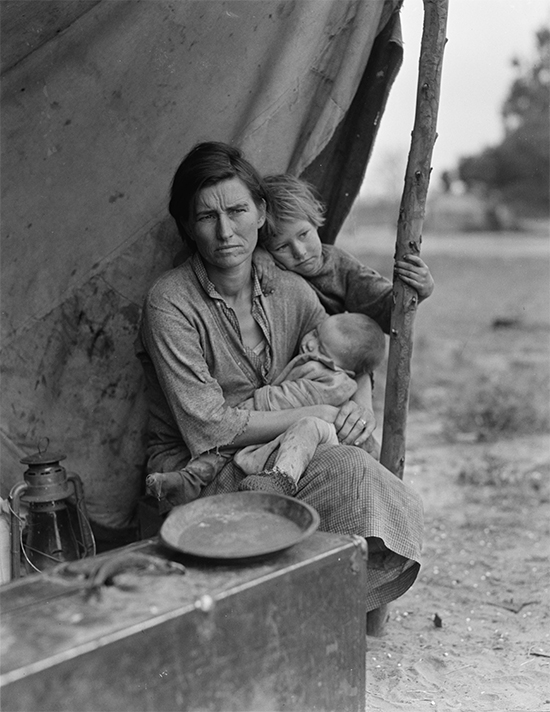
This photograph drew much needed attention to Nipomo, the area that was so deeply affected by the freeze. As a result, the government sent relief rations to the area.
Image courtesy of: Wikimedia Commons
Lange took six pictures; although “Migrant Mother” became the most iconic and one of the most familiar images of the 20th-century. The woman’s three children cower behind her for protection, hiding their faces as their mother looks ahead into the distance. Unfortunately, this image was not a “one off”… during this time the United States was full of families just like the one. Poverty had forced families off their land and into a life of wandering… these families had NOTHING.
Most significant of the woman’s expression is her vacant expression which seemed to portray that things were not going to get better for a very long time. For years, no information was known about this woman and her family and no one knew what had become of them.
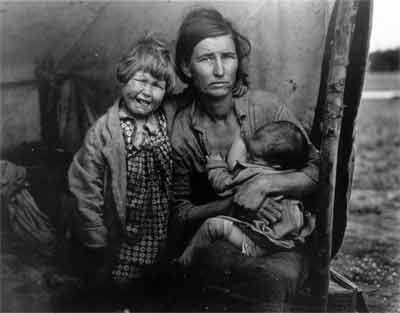
Thompson told the reporter that during cotton harvests, she would place her babies in bags and carry them alongside as she worked down the rows. She earned 5o cents for every hundred pounds picked… generally she picked around 450 pounds. Thompson herself did not weigh even 100 pounds.
Image courtesy of: Pinterest
It took 42 years for someone to track down Migrant Mother, as Lange had promised Thompson that her name would never be published because the mother wanted to spare her children the embarrassment of their past.
The reporter was from the Modesto Bee and tracked Florence Owens Thompson down to a trailer park outside of Modesto, California. Thompson was a Cherokee and born in a teepee in Indian Territory, Oklahoma in 1903. She was married at 17 and moved to California with her husband to work for a farm and millwork property. At the age of 28, she was pregnant with her sixth child when her husband died of tuberculosis. Thompson worked odd jobs and did whatever possible to keep her children fed. For most of the 1930’s, she was a farmhand… picking whatever was in season for meager payment.
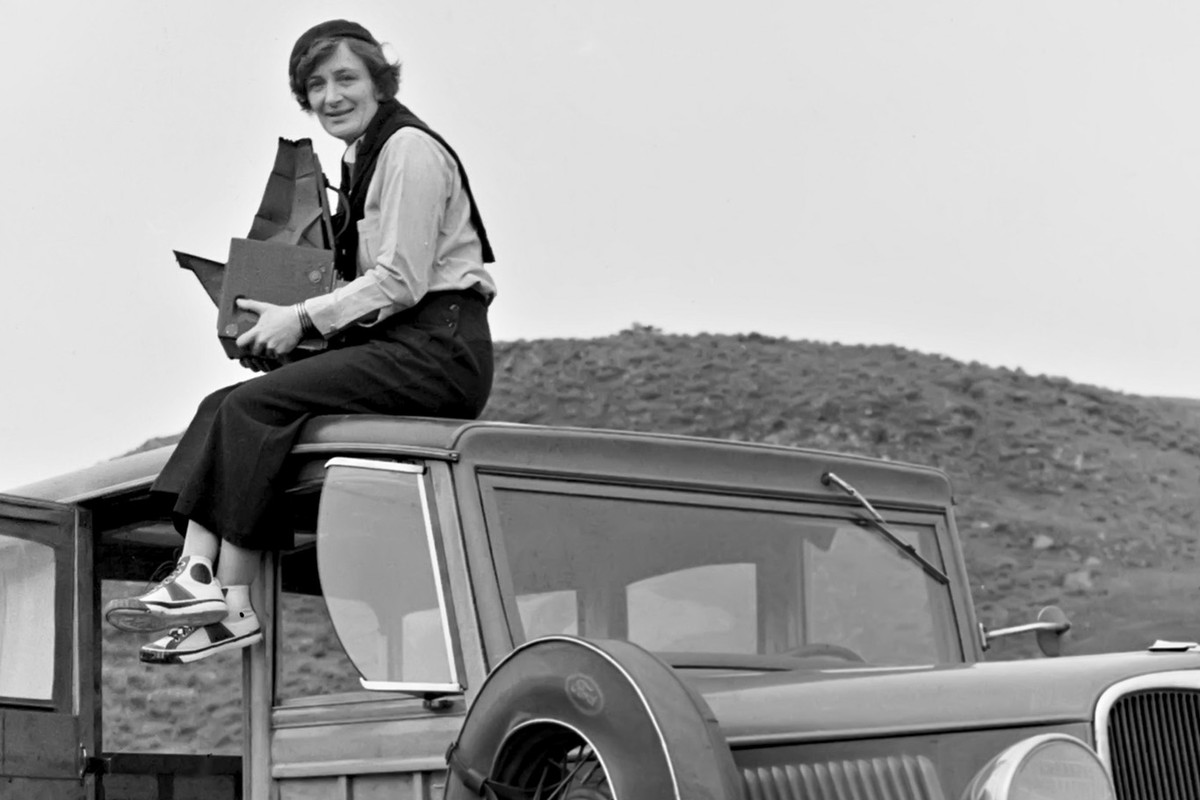
Lange sitting on top of a car with her cherished camera in 1936.
Image courtesy of: PBS
In 1940, Lange was fired from her position with the Farm Security Administration for being “uncooperative.” Basically that meant that she refused to follow orders to point her camera primarily on white Americans. It was, probably correctly thought, that capturing white Americans would garner more financial support. However, Lange was empathetic to ALL Americans and in 1938, while on assignment for the War Relocation Authority she photographed Japanese-American internment camps. Lange captured photographs that showed the brutality of the policy (which was captivating because the government suppressed those images until after the war.)
Contracting polio was a child left Lange with a limp… and helped her to relate to outsiders. Her early work as a portrait photographer trained her to capture her subjects’ dignity. In an interview not long before her death, she said, “My powers of observation are fairly good, and I have used them.”
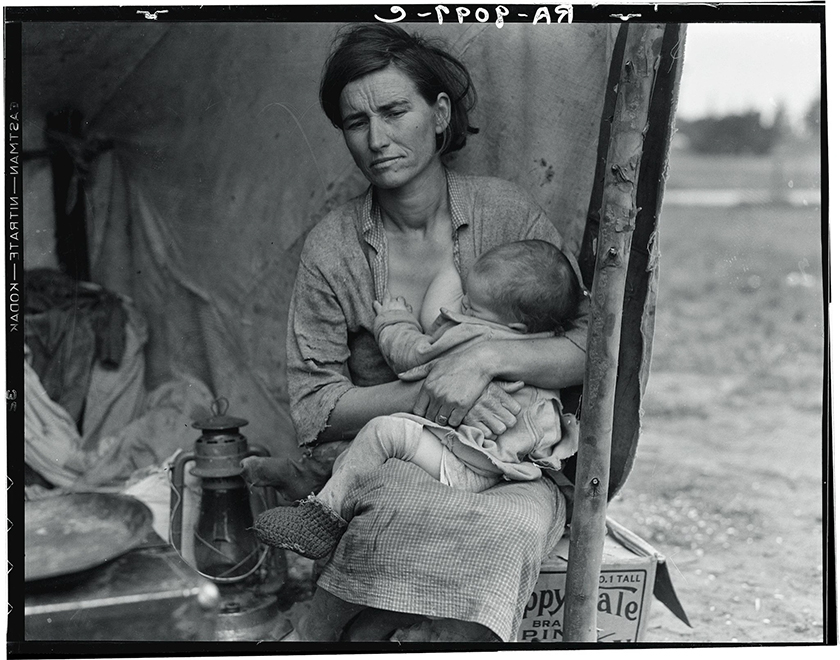
Ms. Thompson with her children in Nipomo.
Image courtesy of: The New York Times
“Migrant Mother” was first exhibited at the Museum of Modern Art’s first photography exhibition in 1940. This was the piece that “made” Lange’s reputation. The subject of the Thompson clan stayed with Lange for her entire life. About the family, she said, “For a while, she and her children lived under a bridge. When Steinbeck wrote in The Grapes of Wrath about those people living under the bridge at Bakersfield — at one time we lived under that bridge. It was the same story. Didn’t even have a tent then, just a ratty old quilt.” Eventually, the family worked their way into the middle class. However, Florence Thompson never felt “at home” in a conventional home. When her ten children bought her a house, she instead chose to live in a trailer saying, “I need to have wheels under me.”

